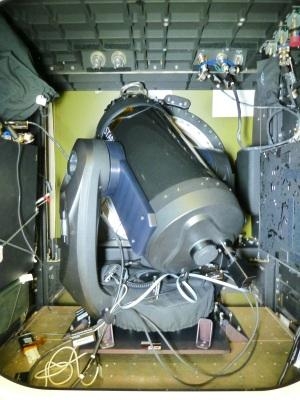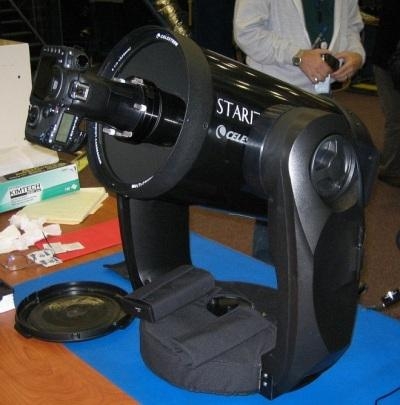Mon, Jul 23, 2012
ISERV Pathfinder To Be Installed In The Station's Destiny Laboratory
A remote-controlled Earth-observing camera system called ISERV launched to the International Space Station (ISS) aboard the Japan Aerospace Exploration Agency's third H-II Transfer Vehicle (HTV-3) Friday. Once installed, the system will be directed by researchers on the ground to acquire imagery of specific areas of the globe for disaster analysis and environmental studies.

ISERV stands for the International Space Station SERVIR Environmental Research and Visualization System. The space station provides researchers a unique perspective through global observations from space. SERVIR is a Spanish acronym meaning "to serve." Also known as the Regional Visualization and Monitoring System, the program provides satellite data and tools to environmental decision makers in developing countries. SERVIR is a partnership between NASA and the U.S. Agency for International Development (USAID).
ISERV will be installed in the Window Observational Research Facility (WORF) in the station's Destiny laboratory. The system is intended to help scientists gain operational experience and expertise and inform the design of a more capable system in the future. Ideally, a future operational system will be able to monitor disasters on Earth. "ISERV came about because officials in developing countries are sometimes unable to acquire the images they need to address environmental threats and provide post-disaster assessments," said Nancy Searby, capacity building program manager for the SERVIR program at NASA Headquarters in Washington. "The SERVIR team approached NASA's ISS and Earth Science Applied Sciences Program with the concept of acquiring the needed imagery from the ISS. The ISERV test bed payload is a result of that collaboration."
The ISERV system, based on a modified commercial telescope and driven by custom software, will use the Earth-facing Destiny science window to obtain images of Earth's surface. It will then transmit the data to scientists on the ground. "Images captured from ISERV on the ISS could provide valuable information back here on Earth," said Dan Irwin, SERVIR program director at Marshall. "We hope it will provide new data and information from space related to natural disasters, environmental crises and the increased effects of climate variability on human populations."

ISERV is the first of an envisioned series of space station Earth-observing instruments, each to feature progressively more capable sensors. Future sensors could be mounted on the exterior of the station for a clearer, wider view of Earth. ISERV development was funded as a collaboration between NASA's Human Exploration and Operations Directorate and the Science Mission Directorate's Earth Science Division Applied Sciences Program.
The team at the Payload Operations Center at Marshall is creating computer-based materials for training the space station crew to assemble and install ISERV in the WORF rack. Normal operations aboard station are set to begin in November.
(Images provided by NASA)
More News
With Testing Soon Complete, Launch Preparations Begin in Earnest Sierra Space's Dream Chaser has been put through the wringer at NASA's Glenn Armstrong Test Facility in Ohio, but w>[...]
Takeoff Roll The process whereby an aircraft is aligned with the runway centerline and the aircraft is moving with the intent to take off. For helicopters, this pertains to the act>[...]
“We’re proud of the hard work that went into receiving this validation, and it will be a welcome relief to our customers in the European Union. We couldn’t be mor>[...]
"Aircraft Spruce is pleased to announce the acquisition of the parts distribution operations of Wag-Aero. Wag-Aero was founded in the 1960’s by Dick and Bobbie Wagner in the >[...]
IDENT Feature The special feature in the Air Traffic Control Radar Beacon System (ATCRBS) equipment. It is used to immediately distinguish one displayed beacon target from other be>[...]
 Sierra Space Repositions Dream Chaser for First Mission
Sierra Space Repositions Dream Chaser for First Mission ANN's Daily Aero-Term (05.10.24): Takeoff Roll
ANN's Daily Aero-Term (05.10.24): Takeoff Roll Aero-News: Quote of the Day (05.10.24)
Aero-News: Quote of the Day (05.10.24) Aero-News: Quote of the Day (05.11.24)
Aero-News: Quote of the Day (05.11.24) ANN's Daily Aero-Term (05.11.24): IDENT Feature
ANN's Daily Aero-Term (05.11.24): IDENT Feature




